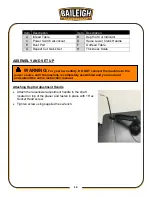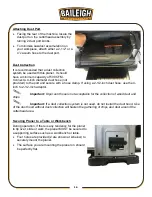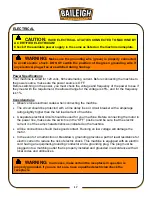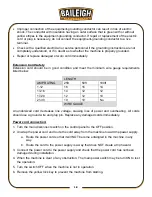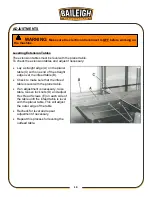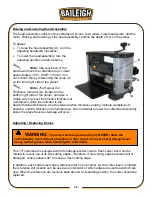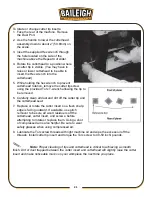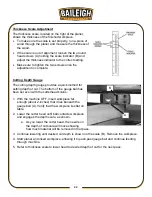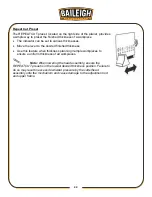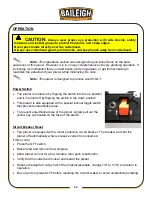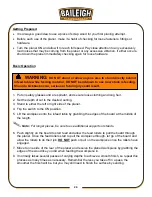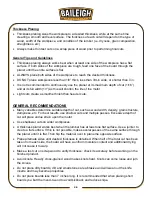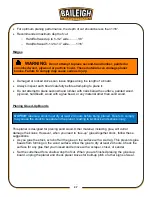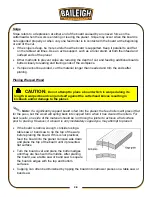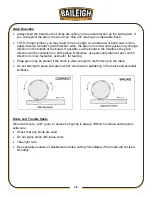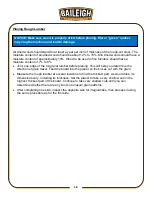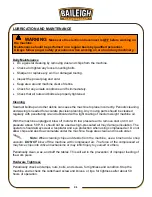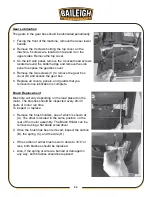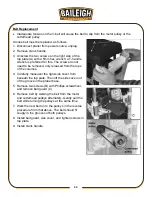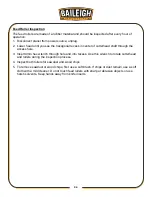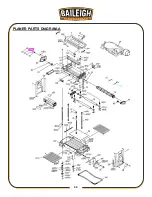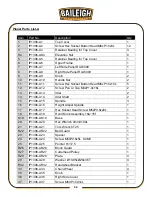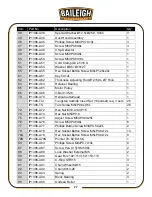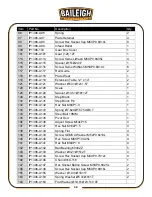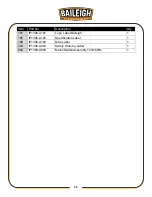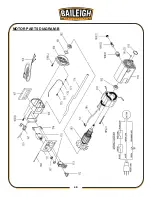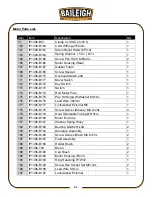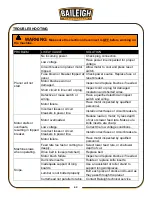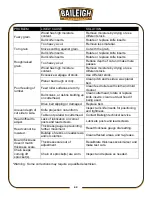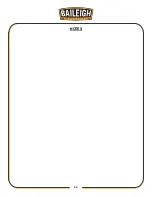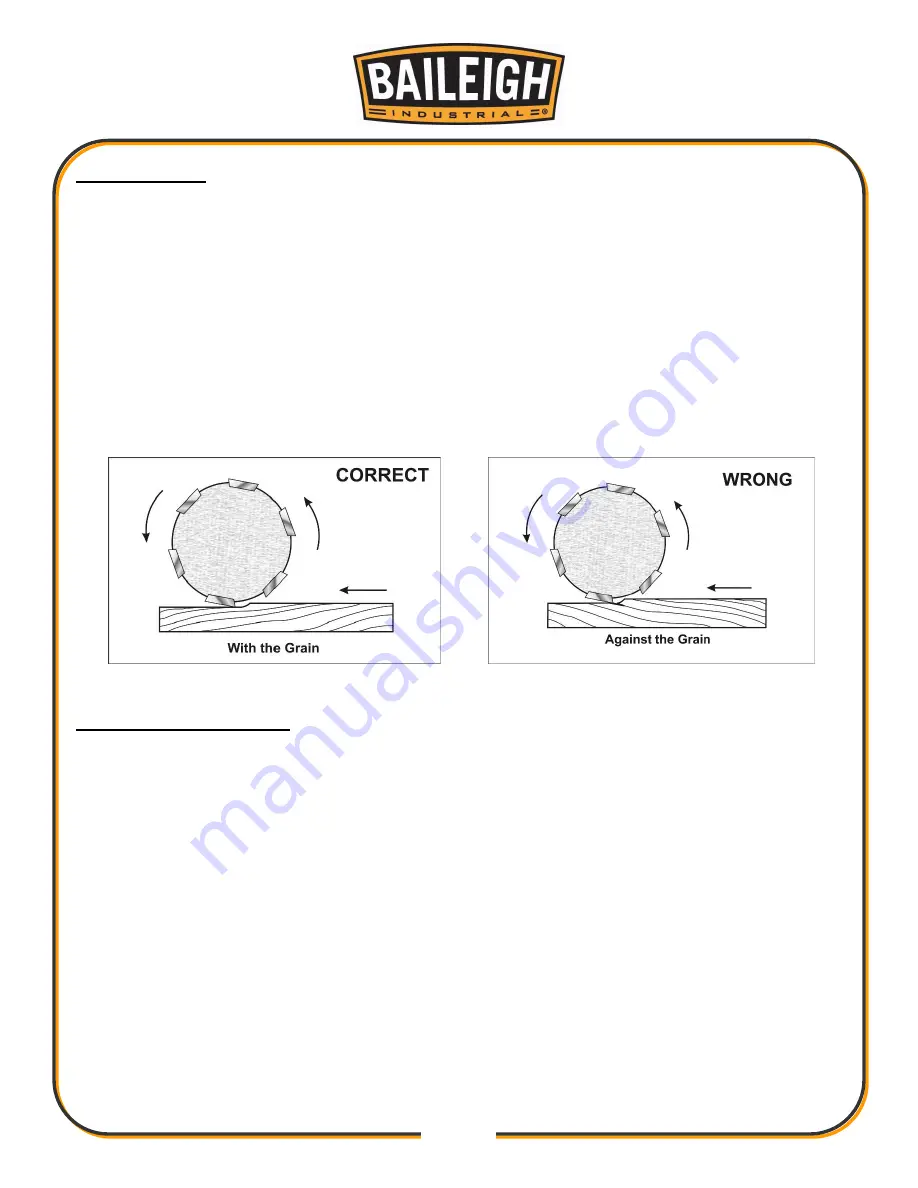
29
29
Grain Direction
•
Always feed the board so the knives are cutting in the same direction as the wood grain. If
you cut against the grain, the wood can “chip out” leaving an undesirable finish.
•
TIP: On rough lumber, you may need to rip one edge on a table saw or band saw to more
easily observe a board’s grain direction. Also, the grain on some wood species may change
direction in the middle of the board. If possible, cut the board in the middle so the grain
direction will be consistent on both pieces. Otherwise, use personal judgment as to which
direction is more favorable, and safer, for feeding.
•
Edge grain may be planed if the stock is wide enough to rest firmly upon the table.
•
Do not attempt to plane end-grain as this can result in splintering of the stock and potential
kickback.
Knots and Trouble Spots
Wood with knots, “wild” grain, or extensive figuring is always difficult to surface and requires
extra care.
•
Check that any knots are solid.
•
Do not plane stock with loose knots.
•
Take light cuts.
•
Be especially cautious of kickbacks and stop cutting immediately if the board will not feed
smoothly.
Summary of Contents for IP-1306
Page 38: ...35 35 PLANER PARTS DIAGRAM A...
Page 43: ...40 40 MOTOR PARTS DIAGRAM B...
Page 47: ...44 44 NOTES...

